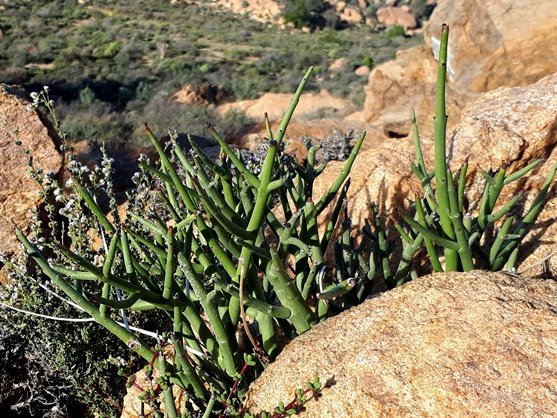Euphorbia spinea

Euphorbia spinea is a much-branched and rebranched, rounded shrub that reaches heights from 70 cm to 1 m. Branching is often opposite in about equal pairs.
Growing from a tuberous base, the untidy branches taper noticeably to their tips usually ending in thin, dry, hard parts resembling spines. These spiny stem-tips earned them the specific epithet spinea. Green here, the stems are often purplish in response to the harsh seasons. The small, dark leaves are scale-like and stalkless, dropping off early.
The dioecious plant bears small yellow and red flowers, growing solitary or in pairs. Female bushes have the inconspicuous purple capsules of 4 mm in diameter on short, recurved stalks.
The plant is distributed in parts of the Northern Cape and Namibia, well-known in parts of the Richtersveld. The habitat is arid, rocky slopes and outcrops, here seen in granite. The species is not considered to be threatened in its habitat early in the twenty first century (Frandsen, 2017; Williamson, 2010; iNaturalist; http://redlist.sanbi.org).

